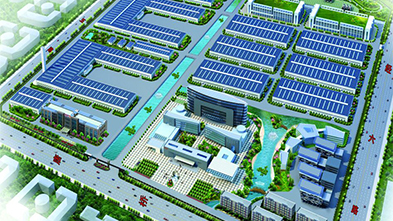Product
News
Contact
Company Name: Guotang Automobile Co., Ltd.
Contact: Chen Lei
Mobile: 15950340707
E-mail: 110942068@qq.com
Website: www.guotangauto.com/en
Address: No. 88, South Ring Road, High-tech Economic Zone, Jianhu County
Electric bus power supply mode
Electric bus power supply mode
Date of release:2019-05-05 Author:Guotang Automobile Co., Ltd. Click:
1. Analysis of electric vehicle power supply mode
The electric vehicle replaces the fuel with electric energy, which fundamentally changes the power driving mode of the traditional automobile. Although the function is the same, it is fundamentally different from the technical one. From another perspective, from the perspective of power services, it is a kind of electrical equipment, which is a new type of electricity demand.
It provides electric power supply for electric vehicles, mainly including AC charging, DC charging and battery replacement.
AC charging: 220V AC power is provided by AC charging pile. The vehicle charger completes AC/DC conversion. The charging power is generally no more than 5 kW. The charging time is usually 5-8 hours, which is mainly used for electric passenger cars.
DC charging: AC/DC conversion is performed by the off-board charger, and the charging power is large, ranging from tens of kilowatts to hundreds of kilowatts. Mainly used for electric vehicle charging, the charging time is longer, at least about 3 hours.
Quick battery replacement: replace the battery pack on the vehicle with a pre-charged battery pack. The domestic equipment can complete the battery replacement in 5-10 minutes, which realizes the rapid replenishment of electric vehicle power.
2. Comparison of electric bus charging and replacing
At present, the recognized battery is the bottleneck restricting the development of electric vehicles. Choosing to charge or change the electricity, people are generally based on the understanding of pure electric passenger cars, from the perspective of the battery itself, from the perspective of the car, the automotive industry perspective.
From battery performance analysis. At present, electric vehicles at home and abroad basically use lithium-ion batteries. Lithium batteries have the advantages of safety and reliability, high working voltage and no memory effect, but their energy density is still low, resulting in a short driving range for electric vehicles with a single charge. It is the battery cycle life is low. At present, the specific energy of domestic battery packs is basically 70Wh, and the cycle life is more than 1000 times. In addition, the environmental difference in the use of the single cell will increase the performance difference between the cells, resulting in worsening of the poor performance of the battery, so that the cycle life of the battery pack is greatly shortened compared to the single cell. If fast charging is used in the bus driving gap, and the bus is supplied with electric energy, the negative polarity of the battery will be polarized, and the capacity will be seriously attenuated, causing a sharp decay of life. Therefore, the use cost of the battery part of the electric vehicle is increased, and the economy of the electric vehicle is reduced.
2, from the charging method analysis
First, the current battery pack has a specific energy of about 70 Wh. Take the Qingdao bus as an example. The average daily mileage is about 220 kilometers. If the charging method is used, at least 220 kWh is required to meet the mileage requirements for charging once a day. Approximately 3,100 kilograms of battery. In order to reduce the weight of the car and reduce the weight of the car body, there will be a phenomenon in which two cars are used as one car in some demonstration projects, that is, two cars run in a shift every day.
Second, even if battery life is not considered, fast charging is used. According to the current general bus loading 140 kWh battery, according to 3C charging, the charging power will reach 420 kW. The AC side (380V) current reaches 600A, and the wire diameter needs to reach 240 square millimeters. The current on the DC side (537V) will reach 800A. The positive and negative poles of the charging connector need two contacts with a diameter of 18 mm. In order to ensure the reliable electrical connection of the connector contacts and meet the temperature rise requirements, the structural design must be very large. Retention force, the connector insertion force will reach 500N or more, then it is necessary to mount the power assist device, which will greatly increase the size and weight of the connector, making the charging operation very difficult.
Third, if the power exchange mode is selected, it can be charged by the box charging 0.3C, and the charging current is only 80A, which effectively reduces the wire diameter and the DC contact on the AC side; effectively improves the battery balance in the battery pack. The power exchange mode also facilitates maintenance during battery use, early detection of battery differences, equalization of the battery pack, and even replacement of batteries with large differences in performance, effectively extending the life of the battery pack. At the same time, when the power battery can not be applied on the electric vehicle, the battery performance is only reduced by 30%-40%, and there is huge utilization space, and the battery can be used in the substation DC power supply, energy storage power station and the like. In addition, according to the driving route, the motor and battery weight can be optimally matched with the vehicle operation, for example, according to two back and forth 70 kilometers, the battery is only six or seven hundred kilograms. In this way, the battery is saved, the weight of the vehicle is reduced, and the operation and maintenance efficiency and efficiency are improved. Therefore, by changing the power mode, the power battery benefit chain is extended, the cost of using the power battery for the electric vehicle is effectively reduced, and the economy of the electric vehicle is improved.
From the grid security analysis. The charging mode of the bus will cause a large-scale and high-current DC charger to be connected to the power grid on a large scale, which will bring a large load impact to the distribution network, resulting in serious overload of the distribution network. At the same time, the load of the charger is a non-linear load, which will cause serious harmonic pollution to the power grid. The measured data of the Beijing Olympic charging station indicates that the current harmonic distortion rate caused by the charger is as high as 30-40%. If it is not treated, it will seriously affect the power grid and User's stable operation and power quality. Therefore, the choice of electric vehicle charging and charging mode and the construction of charging facilities should be combined with the development status of China's power grid. Only by ensuring reliable operation of the power grid can the electric power supply of electric vehicles be guaranteed.
In summary, the choice of charging and switching modes cannot be considered solely from the perspective of vehicles. It is necessary to select a reasonable power supply method from the perspectives of bus application requirements, equipment technical feasibility, grid security, and overall economics of electric vehicles.
The address of this article:http://www.guotangauto.com/en/news/455.html
Recently browse:
Related products:
Related news:
苏ICP备19031716号 Powered by Clouds platform Technical Support:Xiangyun Platform Yancheng Company





